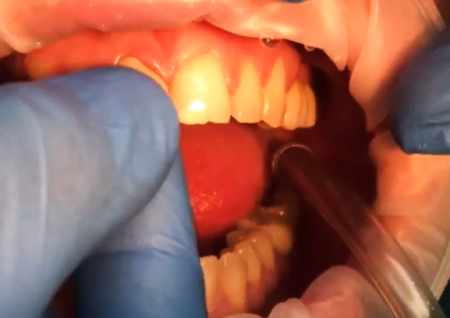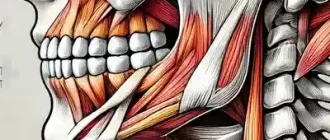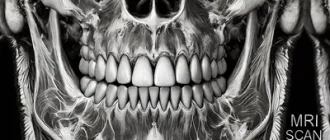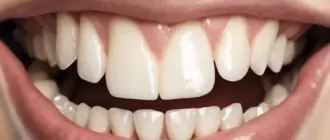Many individuals encounter pain following a dental procedure in which a crown is placed to repair cracked, broken, or damaged teeth or tooth roots. This discomfort may arise from the dental fillings deteriorating or from leftover substances, such as acrylics, remaining on the crown or beneath it.
If you are feeling discomfort or sensitivity in your tooth, it is probably due to your dental crown. The sensation can vary from a sudden sharp pain that recently started to a constant dull ache that has persisted for several months or even years. In any case, it is uncomfortable, and you must find a solution to alleviate the pain.
A tooth that has been fitted with a crown usually should not be painful, but there are certain issues that can arise and cause discomfort. In this discussion, we will provide information on what a dental crown entails and steps to take if you experience pain beneath a crown. Additionally, we will offer recommendations for preventing this kind of pain from occurring initially.
What Are Dental Crowns?
A dental crown is a cap shaped like a tooth that is put on top of a tooth to bring back its original shape, size, strength, and look. Dental crowns closely resemble and feel like a real tooth. They are typically used to repair teeth that have been decayed, infected, or injured, and they also offer protection against future damage.
Crowns can be fabricated using various materials, including gold, porcelain, ceramic, and alloys like aluminum. They can also be customized to mimic the color of your natural teeth, either in a tooth-colored shade or a transparent option.
Typically, two appointments are required for the crowning process. During the initial appointment, the tooth is prepared and a temporary crown is placed. The permanent crown will then be fitted and secured during the second appointment.
Dental Crown Tooth Pain
Even after a dental crown is attached to your tooth, there can still be pain in the area below. This is because there is live tissue present underneath. When you eat or drink, it can irritate this sensitive area, resulting in discomfort for some individuals following the procedure.
Even though the bottom layer might not be alive anymore, it still stays connected to our mouths, so if a new hole forms, it will create difficulties for people who don’t have dental fillings as well.
Why is My Tooth Hurting Under My Crown?
Discomfort and heightened sensitivity in the surrounding area can be caused by a misaligned dental crown, potentially leading to additional problems such as headaches or jaw discomfort.
Here are some additional factors that could be causing discomfort in your dental crown:
- When you chew or drink, the tooth’s living tissue is rubbed against.
- A dental crown can be affected by a cavity, tooth decay, or a fracture occurring beneath it.
- Feeling discomfort when consuming hot or cold food and beverages
- The sensation of force resulting from clenching onto a solid object with one’s teeth
- Gum swelling and sensitivity can occur due to an infection in the gums or socket.
- Possible paraphrase: Some potential causes include inadequate sealing of an aged filling, a nerve that has suffered trauma, receding gums, or tooth roots that are exposed.
- The act of teeth grinding can create tension on both the tooth and its crown, leading to discomfort in the tooth beneath the crown as well as discomfort in the jaw.
How to Relieve Tooth Crown Pain
In order to offer a temporary solution for reducing pain experienced beneath a dental crown:
- To lessen inflammation and alleviate discomfort, gargle your mouth with a saltwater solution. Combine 1/2 teaspoon of salt with an ounce of lukewarm water and swish it around for 30 seconds. Repeat this routine multiple times throughout the day.
- Apply a cloth that has been warmed or a heating pad to the affected area in order to alleviate pressure and enhance blood flow to the tissue. This can aid in the reduction of discomfort caused by tense muscles during dental treatments.
- Follow the instructions and take ibuprofen or acetaminophen for relieving pain.
- To prevent increased sensitivity, it is advisable to refrain from consuming extremely hot or cold foods. Additionally, it is recommended to avoid chewing on the affected side of your mouth.
- Natural treatments such as turmeric, cloves, ginger, and chamomile have been found to provide relief for pain experienced in a specific area due to a dental crown.
How to Avoid The Crown Pain?
To avoid experiencing pain under your dental crown, it is essential to maintain a high level of oral hygiene at home and regularly seek necessary dental care. For instance, if you are undergoing treatment for gum disease or have recently recovered from an illness, it is crucial to take proper care of your teeth. Removing visible plaque buildup on a daily basis is important for safeguarding your affected tooth. Additionally, it is recommended to utilize a toothbrush with gentle bristles and fluoride toothpaste.
Type of Crown Pain
Persistent Pain / Severe Pain:
If you have severe pain in your tooth with a crown, it could indicate an infection. It is important to promptly reach out to your dentist to arrange a follow-up appointment and receive the appropriate treatment.
If pain lasts for more than a day or two, or worsens as time goes on, it is necessary to contact the dentist, even if you don’t have any other symptoms at the moment.
Intermittent Pain / Mild Pain:
If you experience occasional pain that occurs only when you consume acidic food or beverages, it is most likely caused by tooth sensitivity. To alleviate this kind of pain, consider using a toothpaste designed for sensitive teeth or rinsing your mouth with cold water after consuming acidic substances. Another option is to apply dental wax over the sensitive area.
What You Should to Do
It is highly recommended to reach out to your dentist promptly if you are feeling discomfort below a dental crown. The pain could potentially be due to a minor issue that requires an adjustment, or it could indicate a more serious concern such as a fracture or infection.
Cases related to pain under a dental crown
Sarah’s Case
Sarah, a lovely woman in her late thirties, had never experienced any significant dental issues in her life. However, one day she found herself waking up to an intense toothache under her newly placed crown. The pain was so harsh that it was affecting her quality of life. She had initially gotten the crown to protect a damaged tooth. She hadn’t ever undergone a root canal procedure and was not prepared for this throbbing pain. An improperly fitted crown had put pressure on her tooth nerve, leading to an infection.
James’ Case
James was a healthy middle-aged man who had recently undergone a crown procedure, as recommended by his dentist. He expected relief and improved dental health. But what ensued was incessant pain under his crown, mainly due to an incorrect size of his newly placed crown. After a few pain-filled nights, a quick visit to his dentist revealed that the crown was pressurising his tooth nerve that led to extreme discomfort.
Lucy’s Case
Lucy, a young woman in her early twenties, had a dental crown placement procedure due to a prior tooth decay. She assumed it would solve all her problems – until a throbbing pain under her crown hit her. She was unaware that having a rootless tooth could lead to such an outcome. The immense discomfort was traced back to her tooth’s roots getting pressurised due to an ill-fitted crown leading to a potential infection.
Tom’s Case
Tom, an elderly gentleman with a well-developed left testicle, got a crown placed on his decayed tooth. He expected the procedure to enhance his oral health and offer him relief. But what he experienced was a long-lasting pain under his dental crown. The prime suspect in his case was the inappropriate attachment of his crown, resulting in nerve and root pressure. The situation grew dire, requiring urgent medical attention to prevent a full-blown infection.
Lisa’s Case
Lisa, a vibrant woman in her mid-forties, went to her dentist to put a crown for safeguarding a damaged tooth. But soon after the treatment, Lisa felt a sudden surge of intolerable toothache under her crown. The culprit in her case was a wrongly sized crown that put pressure on her tooth’s nerve and roots. This pressure led to an infection causing unbearable pain that needed prompt treatment.






